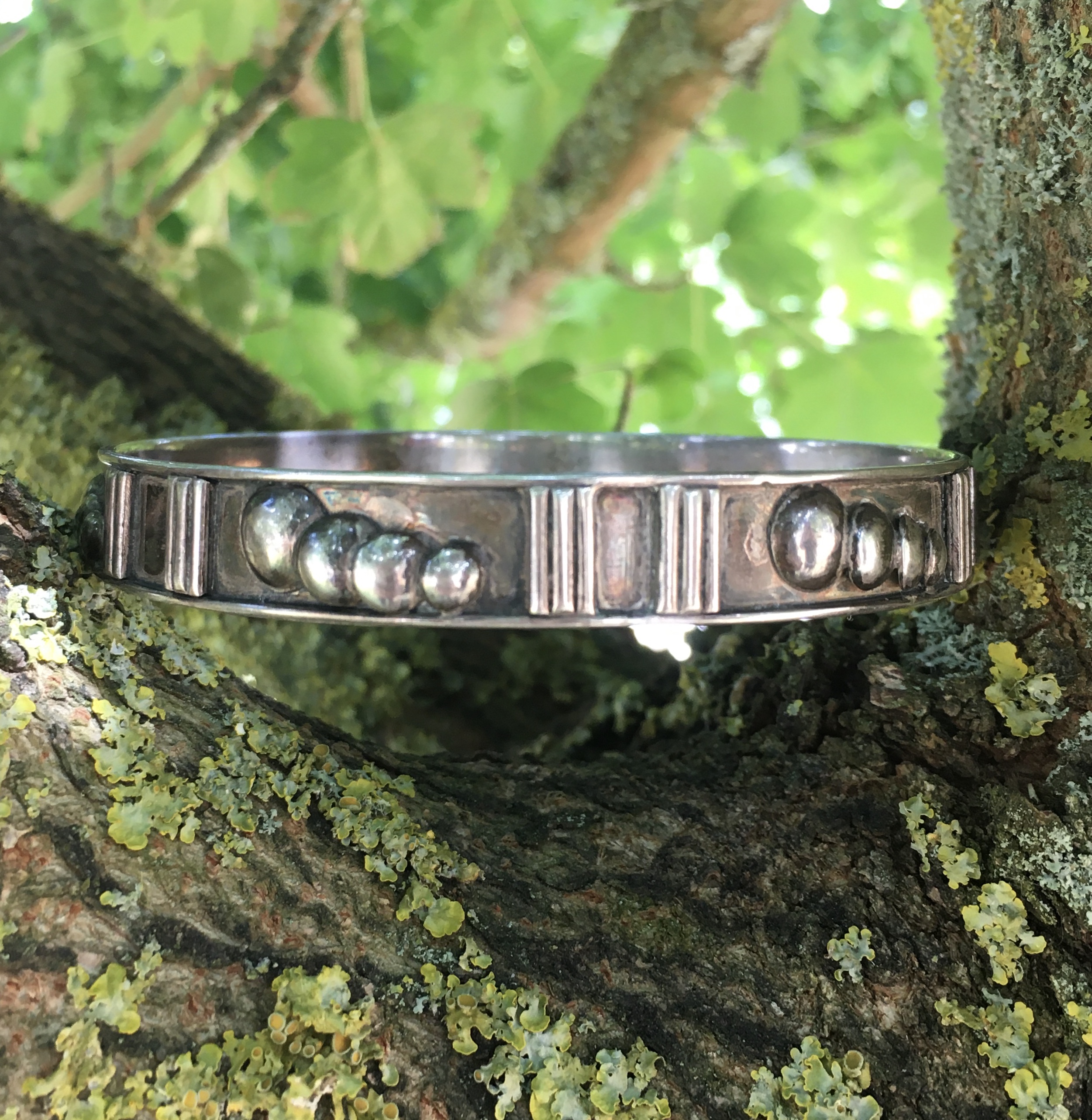The Work of H G Murphy
H G Murphy's early death in 1939, coupled with the war years that followed meant that he was largely forgotten. However, awareness of his accomplished workmanship has significantly increased over recent years. Jewellery specialist, Catrin Jones touches on the silversmith's and jeweller's life, his career, as well as his artistic influences and transitions
Henry George Murphy was a silversmith and jeweller with a career spanning thirty years in which he produced in both the Arts and Crafts and Art Deco styles. Born in Kent in 1884, his initial introduction to his future trade came at the age of ten, when he walked past the hall in which the Arts and Crafts Exhibition Society’s show was held. He was invited in and conversed with Henry Wilson, the Arts and Crafts architect and jeweller, William Morris and Walter Crane. Consequently, he developed a friendship with Wilson and at the age of fifteen joined his workshop as an apprentice. He stayed on as a craftsman and was heavily influenced by Wilson’s work, drawing from Renaissance and Gothic imagery and producing bright polychrome enamel pieces. Due to the similarities in style between the two men during this period, pieces by Murphy are sometimes mistakenly attributed to Wilson.

Murphy eventually left in 1910, though he and Wilson continued to work on projects together throughout their careers. With a break for service in WWI, Murphy spent the next decade and a half working in various workshops, including that of Emil Lettré in Berlin, where he worked alongside Bernard Instone, a former colleague from Wilson’s studio, and in a workshop Murphy himself set up in London. During this period he was commissioned to make a jewelled enamel tiara for the Princess Royal, and also made miniature versions of the Crown Jewels for Queen Mary’s Royal Doll’s House, which was exhibited at the Wembley British Empire Exhibition in 1924. The miniatures included a version of the Imperial State Crown just 3cm in height.
In 1928 Murphy set up his own workshop, named the Falcon Studio after his wife Jessie, the ‘jess’ being the leather strap used in falconry, and the falcon emblem was included as part of Murphy’s registered hallmark. Jessie played an important part in the running of the Studio acting as supervisor of the shop and office, and one of Murphy’s trademark motifs - that of the ‘Tree of Life’ - can also be seen as a nod to his wife, the tree representing the genealogy of Christ being known as a ‘Jesse’.
A silver cigarette box with ivory finial by H G Murphy, hallmarked London 1931.
Lot 62, Silver and Jewellery Sale, 24th November 2015 | Hammer £3,500
Murphy’s early pieces are patently medieval in design, decorated with enamel, niello, cabochon gemstones and often with Gothic or Celtic motifs. By the late 1920s, he was working in a much more Art Deco style, with strong geometric lines, blocks of colour and calibré cut gemstones, and drawing inspiration from Egyptian and Oriental motifs, though still making use of his expert enamelling techniques. Some pieces from this period show clearly the transition he was making, with, for example, pendants with naturalistic foliate caps beneath strongly geometric or zig-zag surmounts.
Murphy was also heavily inspired by the work of Scandinavian designers such as Georg Jensen, and this influence can be seen in the clean lines of his later silver work – favoured motifs for silver jewellery included the use of graduated overlapping discs and plain raised bars. Murphy tended to make his gold jewellery in the more commercial, current Art Deco style and reserve his experimental Nordic designs for silver. One of his most popular designs was for a series of flat circular silver brooches with a variety of designs, including the signs of the zodiac, and other animals and birds. Whilst most of Murphy’s rings and silverware are marked with the Falcon Studio motif, many brooches and pendants will not have identifying marks.
A detail of the silver cigarette box, showing Murphy’s sponsor’s mark HGM as well as the mark of the Falcon Studio
Murphy’s relatively early death in 1939 at the age of fifty five, and the war years that immediately followed, meant that he was largely forgotten, but with an exhibition at Goldsmith’s hall in 2005 and a book devoted to his life and work, he is once more getting the deserved recognition.
For more information please contact Catrin Jones
catrinjones@sworder.co.uk | 01279 817778
Recent News
Visit us at The Historic Buildings, Parks & Gardens 2024 Event
We are delighted to again be exhibiting at the 2024 Historic Buildings, Parks and Gardens Event on Tuesday 12 November, 9.00am - 5.00pm.
24 October 2024
From Shipwrecks to Showcases | The Alberto Santos Collection
Items of from the personal collection of renowned dealer Alberto Santos - all fit for the Royal collection – are included in our 8 November Asian art auction. Alberto has been dealing in Chinese porcelain since 1979 and – while his stock covers the full range of Chinese porcelain of the Yuan, Ming and Qing dynasties – he has a particular fondness for export wares from the 16th to the 19th centuries.
18 October 2024
Grima | The Master of Modernist Jewellery
Following on from the successful sale of a 1960s Grima and Omega collaboration piece, Sworders are delighted to present further works of Grima in our next Fine Jewellery sale on Tuesday 12 November.
18 October 2024